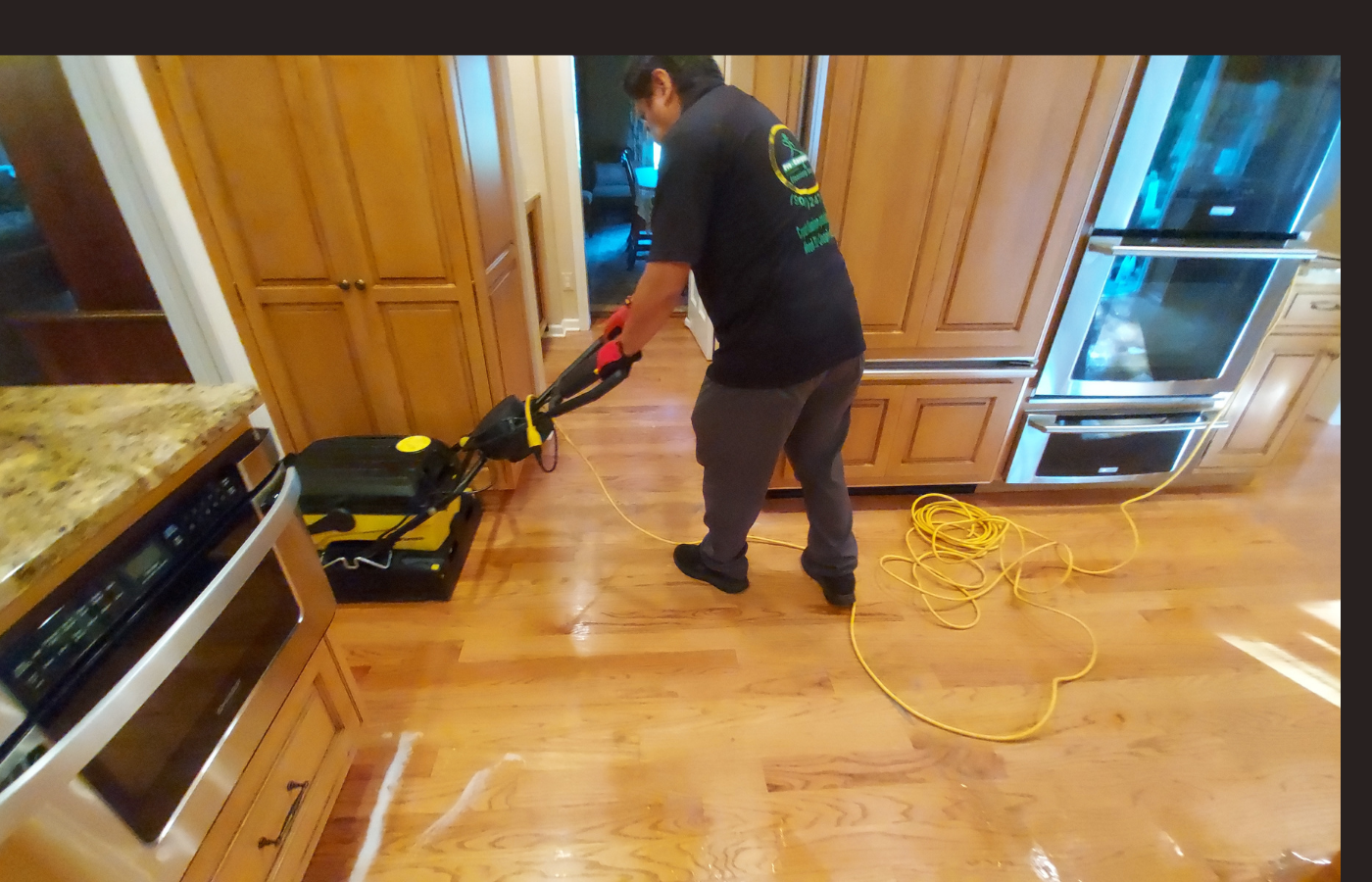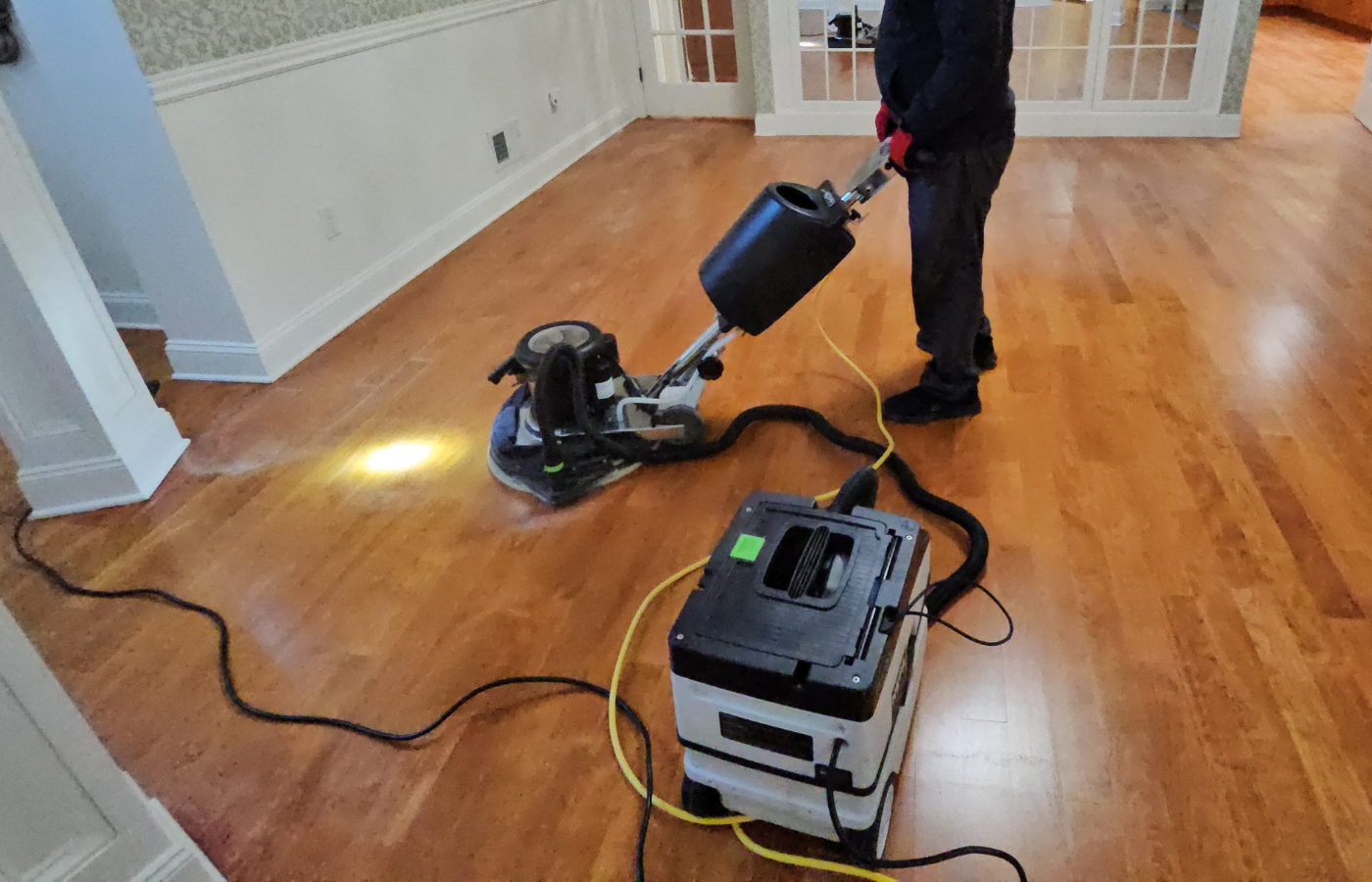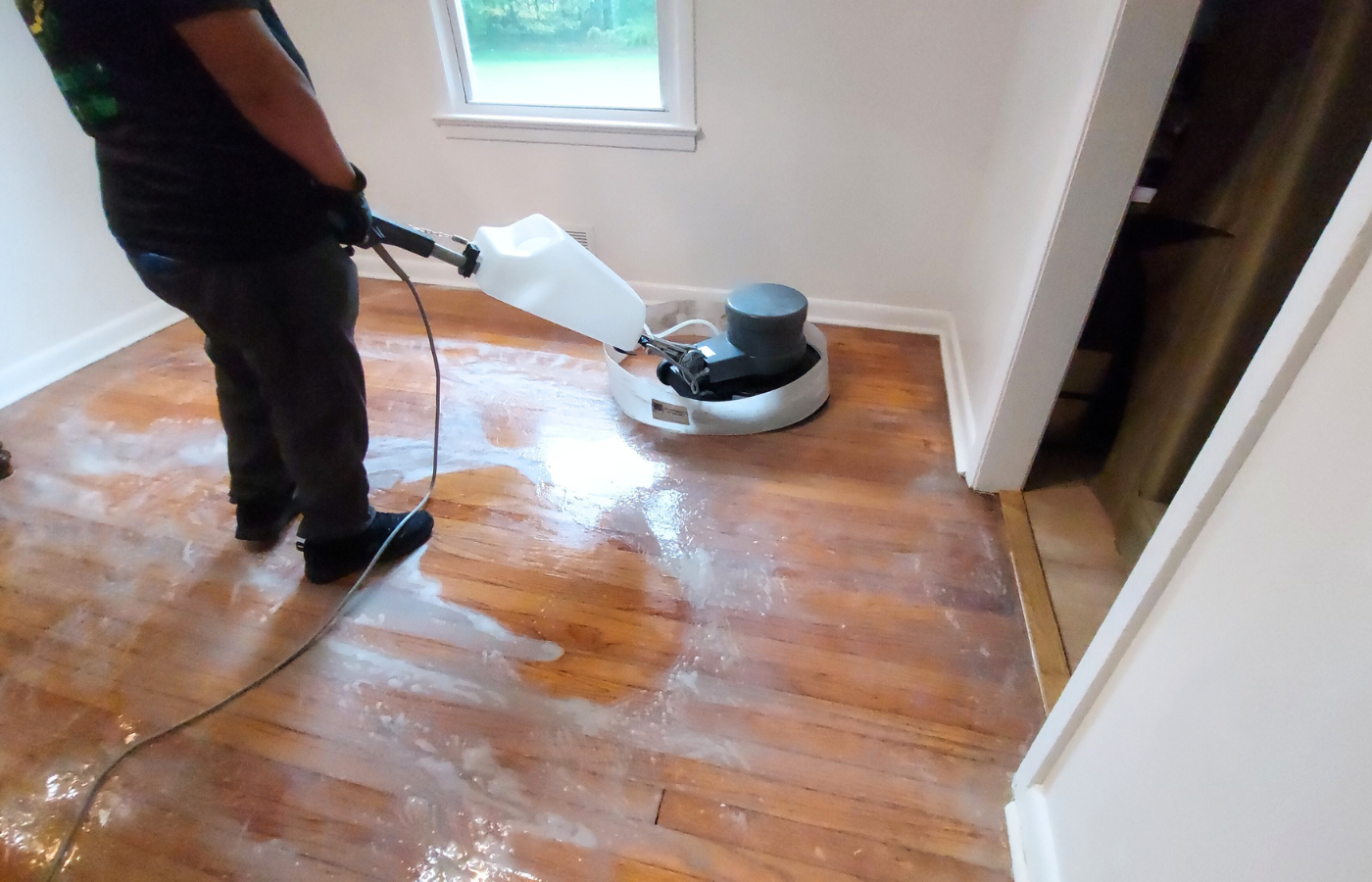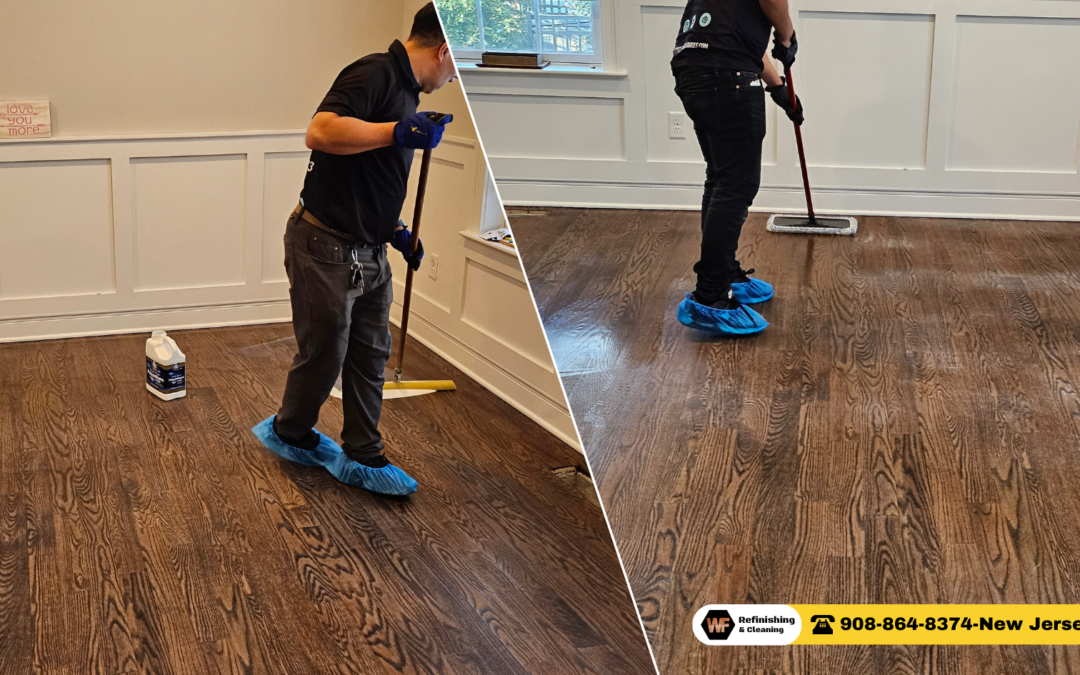How Long Does It Take for Wood Floor Finish to Dry? (Water vs. Oil-Based Polyurethane)
When refinishing wood floors, understanding the drying and curing times is crucial. This guide explores how long it takes for water-based and oil-based polyurethane finishes to dry, when they fully cure, and when you can safely move back in. Our screen and recoat process allows you to get back to your space the same day.
Water-Based Polyurethane Dry Time and Cure Time
Water-based polyurethane is known for its fast drying time:
- Dry Time: Usually 1-2 hours. You can walk on it with socks after this period.
- Cure Time: Full cure takes about 5 days, but light furniture can be moved in after 2-3 days.
Oil-Based Polyurethane Dry Time and Cure Time
Oil-based finishes take longer to dry and cure:
- Dry Time: Typically 8-12 hours. Allow at least 24 hours before walking on it.
- Cure Time: It takes about 30 days to fully cure. Furniture can be moved in after 4-7 days.




When Can You Move Back In?
- Water-Based Polyurethane: Safe to move in after 2-3 days.
- Oil-Based Polyurethane: Move in after 4-7 days but avoid heavy rugs or dragging furniture until fully cured.
Why Choose Our Screen and Recoat Service?
- No need to vacate for days – you can return the same evening.
- Quick drying times with minimal odor.
- Perfect for maintaining your hardwood floors without the hassle of a full refinish.
- Learn More…
Hardwood floor services:
- Hardwood floor cleaning & Buffer
- Hardwood floor cleaning & refinishing
- Hardwoodfloor wax removal
- Hardwood floor screening & Recoat
- Hazy Hardwood Floors?
- Bona Floor Polish is Not a Floor Cleaner
- How to Remove Wax from Hardwood Floors
- What Pets Do to Hardwood Floor
- hardwood floor maintenance for new homeowners
- Hardwood floor maintenance before selling
- Water based vs oil based polyurethane
- How long does it take for wood floor finish to dry?
Floor Cleaning Topics:
- Steam Carpet Cleaning -Summit NJ
- How to dry carpet after cleaning
- How to get rid of odor in carpets
- Basement water damage -steam carpet cleaning
- Lear how to clean wood floor
- How often should I clean my carpet?
- Best Homemade carpet cleaner
- Hotel Carpet Cleaning
- Our Expertise in High-Traffic Areas ( Hotels, Apartments buildings…)
- Expert Commercial Carpet Cleaning Services
General Questions
How expensive is Clean & Recoat?
Prices will vary but typically a contractor will charge you less than what they would charge you for sanding and refinishing the floor. Pricing will depend on how much time they spend cleaning a floor, the type of finish they use and the number of applications of finish they make. Get several estimates but pay careful attention to how long they will take, how they will prep the surface and the type of finish they will use. Learn More…
Is this a dusty, smelly process?
The smell of the chemicals used to clean the floors is comparable to typical household cleaners and are not toxic or hazardous. The buffers we use have dust containment systems attached to vacuums to minimize any dust from prep work. We only work with waterborne urethanes that have no offensive odors. Done correctly, Clean & Recoat is the least invasive recoating process on the market today.
How log will a Clean & Recoat last?
With proper care and maintenance and by following a common sense approach to reduce wear and damage, a floor that’s been recoated can give you years of excellent service. I’ve seen floors that I recoated more than ten years ago that are still in very good shape. Most floors that are being recoated will be getting a waterborne finish and these finishes are very good and easily maintained. Learn More…
What is Laminate Flooring?
Laminate flooring is a tongue and groove interlocking flooring system that comes in either planks or squares. All of these floors have a wear layer, a decorative print film layer, an inner core structure, and some type of backing support layer — usually melamine. The print film layer is either fused or glued to the inner core. The print film can be a photo of any real floor. The earlayer is applied to the decorative print layer to protect the pattern. Melamine resins are the main component of the wearlayer. The melamine surface gets its incredible durability from aluminum oxide. Aluminum oxide is almost as hard as diamonds and provides unsurpassed wear and stain resistance. Learn More…
What is Engineered Flooring?
Engineered flooring is produced by bonding three or more layers of wood. The crossing of grain direction within the boards makes this a very dimensionally stable product able to resist nearly all expansion and shrinkage from normal moisture changes. This is one primary feature that makes it suitable for use directly on concrete and below-grade application. Learn More…
Will my floor age or change color?
Yes. You can expect to see shade differences in your floor over time. The cause is usually from exposure to the ultra-violet rays of the sun, whether direct or indirect. This color change will be more noticeable in lighter colors, which will darken over time. In addition, certain species like Brazilian cherry, will naturally darken over the years. These changes are due to the natural characteristics of wood and are not covered by most manufacturers’ warranties.
What is Custom Finishing?
Sanding and refinishing performed to individual specifications. Custom finishing of wood floors is performed in the home on the completely installed new floor, or to refurbish a previously finished floor. Custom finishing permits the owner to select from a full range of stains, sheens and colors.

